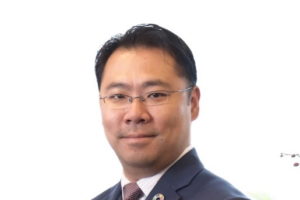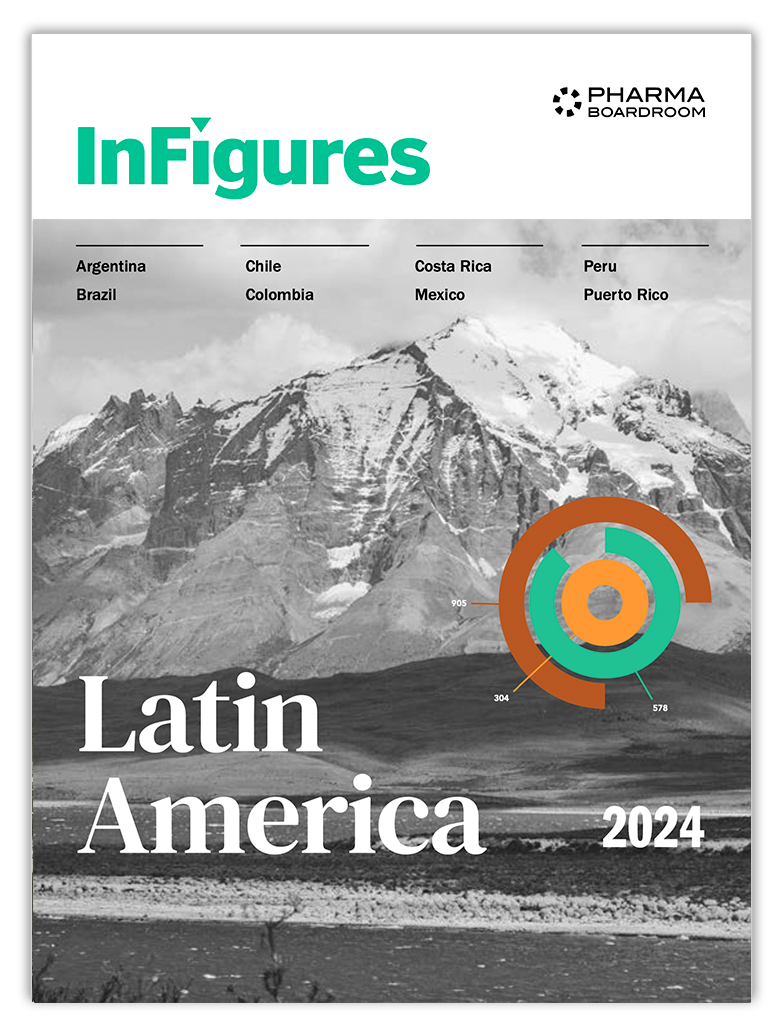Ivan Cheung, head of Japanese firm Eisai’s US operations, highlights the significance of a potential 2021 US FDA approval for Alzheimer’s Disease drug aducanumab, developed in collaboration with Biogen. Cheung also compares the differing challenges of the oncology and neuroscience markets and outlines the unique Eisai company culture.
Ivan, could you start by introducing Eisai’s footprint in the US as well as your mandate within the global Eisai organization?
Eisai’s pharma business first entered the US in the 1980s. During that time, most international pharma companies, whether they came from Europe or Japan or other parts of the world, entered the US because of its positioning as the largest pharma market in the world. The idea was that, if you wanted to launch a blockbuster, you have to go to the US. That was decidedly not the reason Eisai entered the US. When Eisai made that decision to enter the US, the company did not have any assets remotely close to commercialization in the US market. Our CEO, Haruo Naito, had the foresight to recognize the immense innovation potential and activity present in the US market, and he decided to build a drug discovery and research laboratory in Massachusetts. This was very visionary, especially considering that the Cambridge biotech cluster did not exist back then in the 1980s. In fact, Eisai did not launch its first product in the US until 1997, with ARICEPT® (donepezil), which continues to be prescribed throughout the world.
I have been Chairman of the US affiliate, Eisai Inc., since April 2016, and concurrently, I am the President of Eisai’s global Neurology Business Group. Therefore, at least in pre-COVID times, I spent roughly two-thirds of my time at Woodcliff Lake, New Jersey, in the US, where the US affiliate is based, and the remaining one-third in Tokyo, Japan, at Eisai HQ, as well as on business travels through the rest of the world.
How would you evaluate the strategic importance of the US affiliate to Eisai today?
I would highlight three things. Firstly, if you look at our FY 2019 financial results, the Americas represent over 18 percent of the global business in 2019, rendering the region the second-largest market for Eisai globally after our home market of Japan. Looking at the projections within our current ten-year plan from 2016-2025, as a company, we expect the US business potentially to comprise around 40 percent of our global business by 2025, which would then make us the largest Eisai affiliate.
Historically, during the heyday of ARICEPT® around 2008-2009, the US did represent around 40 percent of Eisai’s global business. However, this figure has fluctuated because the product mix and portfolio composition of the US business is markedly different from that of the businesses in Asia. In most Asian markets, you can typically find a very balanced and diversified portfolio composed of both new and legacy products. Based on how the US healthcare system is structured, however, that business model does not exist. The US business model relies solely on new patented drugs, which means it is more cyclical.
As a result, we have learned that to perform well in the US, we need to have a consistently robust pipeline instead of relying on just one or two blockbusters. Since the launch of ARICEPT®, Eisai has therefore worked extremely hard to build a rich pipeline that would allow us to have multiple large-potential assets in play at any one moment.
This takes me to my second point: the US is very important because we have invested significantly in R&D here. We have four major R&D hubs in the US, helping not only patients in the US but also patients globally, through our work on breakthrough medicines. We have two discovery facilities in Cambridge: H3 Biomedicine, which focuses on cancer genomics-based drug discovery, and already has multiple clinical-stage assets; and the Center for Genetics Guided Dementia Discovery (G2D2), which works on AD specifically, the hot new area of immuno-dementia. The third R&D hub is in Pennsylvania, Epochal Precision Anti-Cancer Therapeutics (EPAT), which takes a modality-driven approach to oncology, with a focus on antibody-drug conjugates (ADCs) and bispecific antibodies, and has multiple clinical-stage assets. The fourth is in New Jersey, which houses our global clinical development and regulatory affairs operations for both oncology and neuroscience.
Finally, Eisai currently has two major collaborations in oncology and neuroscience, with Merck & Co., Inc. Kenilworth, NJ USA (known as MSD outside the US and Canada) and Biogen, Cambridge, MA respectively. Both of them are headquartered in the US so that represents the third reason why the US is a fundamentally strategic market for Eisai.
Eisai is one of the leading global players in neuroscience, with a recent milestone being the exciting collaboration with Biogen and the potential approval of aducanumab in the US for March 2021. Aducanumab’s journey to the market has certainly been an interesting one. Could you elaborate on what this compound and this Biogen partnership mean for Eisai US?
Our collaboration with Biogen involves two investigational assets for AD: aducanumab, which is under regulatory review by the US FDA with a PDUFA action date in March 2021, and BAN2401, which is currently under Phase III clinical development. Phase III readout is expected in 2022. Aducanumab is an anti-amyloid beta (Aβ) antibody, while BAN2401 is an anti-Aβ protofibril antibody.
I think the aducanumab experience has been invaluable for advancing research into AD. As the many failures in the field have made clear, neuroscience is a very difficult and complex therapeutic area. In my view, it is not a matter of resources. The crux is having a profound and deep understanding of human biology and pathophysiological underpinnings of the neurological condition. In the past, companies worked on antibodies that targeted more upstream non-toxic monomer species or pan-targeting antibodies. They could reduce the amyloid load by, for example, 30 to 40 percent so initially, researchers were confused about why the drugs were still ineffective. From our data from these two assets, we found that the amyloid load needs to be reduced by 80 to 90 percent in order to potentially see any patient benefit. This indicates that MoA-based potency and therefore dosage levels are critical factors to the success of an AD drug – and not all antibodies can be given in high dosages for various pharmacokinetic and/or safety reasons.
To summarize, basically, we have learned that firstly, the mechanism of action and the target matter. Secondly, dosages also matter. Both our assets have unique mechanisms of action and have been given in high dosages. Therefore, we are very excited about their potential utilities, and both assets are very important to Eisai.
How is Eisai preparing for the upcoming launch of aducanumab in the US?
For me personally, it is a very delicate balance. Patients and their families have been waiting for an AD drug for a very long time. Ever since ARICEPT® was launched, the goal was always to advance from simply having a symptomatic treatment to a longer-term disease-modifying therapy for AD. This is an area of serious unmet need. However, at the same time, we are also aware that patients have been waiting for such a long time and have experienced so many disappointing news about failed clinical trials that they are very wary of false hope. When I speak to patient groups, I have very mixed feelings because, on one hand, I know that we have great science and promising assets, but on the other hand, I know that all these developments have taken a very long time and we have still not crossed the finish line. Am I supposed to be excited and proud of the progress we have made in AD or should I be apologetic about how slow that progress has been? It is a difficult balance.
What is important, however, is that now that we are so close to the finish line, we have to set the stage so that patients with AD and their families can potentially benefit from it. Aducanumab is intended for patients with early-stage AD, experiencing only mild symptoms of cognitive impairment. A pathological diagnosis is required instead of a functional one, which means that the diagnostic infrastructure and the patient awareness piece need to be there. Early diagnosis is absolutely critical. We need to have the right programs and initiatives in place to educate and enable early diagnosis and the right diagnosis so patients can access the treatment they need.
Oncology is the other therapeutic area of focus for Eisai, and you spent a few years as Deputy President of Eisai’s Global Oncology Business Unit. What can we expect from Eisai in this space?
I like to say that while neuroscience is challenging from a scientific viewpoint, oncology is challenging from a market competition viewpoint. In the near term, we have a very exciting collaboration with Merck & Co. for our tyrosine kinase inhibitor (TKI) LENVIMA® (lenvatinib), both as a monotherapy and in combination with their blockbuster immunotherapy, KEYTRUDA® (pembrolizumab), for a range of cancers. There are currently 19 registered combination trials ongoing. This is very exciting because it is a testament to the potential that Merck sees in LENVIMA®. When the first PD-1 therapies, KEYTRUDA® and OPDIVO®, were launched, many companies tried jumping on the bandwagon to combine their drugs with various PD-1/PD-L1 compounds but it is clear that not every drug has synergistic effects with PD-1/PD-L1 compounds. That approach does not work.
LENVIMA® itself is a multireceptor TKI, targeting both VEGF and FGF receptors. The FGFR target is an area we know very well as we have two other FGFR assets, one FGFR-4 and one pan-FGFR. We also have a rich early- to mid-stage pipeline and we hope a couple of those will become the next LENVIMA®. For instance, from H3 Biomedicine, we also have a selective estrogen receptor covalent antagonist (SERCA), a very unique compound we are exploring for breast cancer. We also have a Phase I STING agonist.
In general, Eisai focuses on areas where we believe we have distinct competitive advantages, for example from our knowledge of medicinal chemistry. For instance, LENVIMA® is not the only TKI on the market but the particular characteristics of LENVIMA® makes it an ideal partner for KEYTRUDA®.
Working for a Japanese company like Eisai, whose CEO Haruo Naito has been in position since 1988 now, how do you find the corporate culture fits in terms of a market like the US, which, as you highlighted previously, has very different commercial characteristics compared to Asian markets like Japan or China, and is extremely competitive and fast-paced?
Decision-making is rather quick in Eisai. At the global executive level, we actually have a pretty flat structure. If different affiliate leaders or business heads need to make an important decision, they can simply speak to our CEO and have a dialogue with other relevant stakeholders across the company. The Japanese culture is in general very thoughtful and contemplative; we want to look at different scenarios and perspectives, but this is a good thing. Subsequently, when it comes to making decisions, especially around innovative ideas, our flat organization allows us to do so quickly.
As a Japanese company located in New Jersey, the pharma hub of the US, how do you attract the best individuals and talents to work for Eisai?
At the end of the day, individuals come and join Eisai – and stay with us – because they truly believe that they can change the world with us. The areas we have chosen to invest in – oncology and neuroscience – are not easy ones. There are tremendous challenges to tackle in these spaces but Eisai has proven that we can make significant contributions to both therapeutic areas. If someone wants to make a difference in AD, for instance, where else would they go instead of Eisai?







